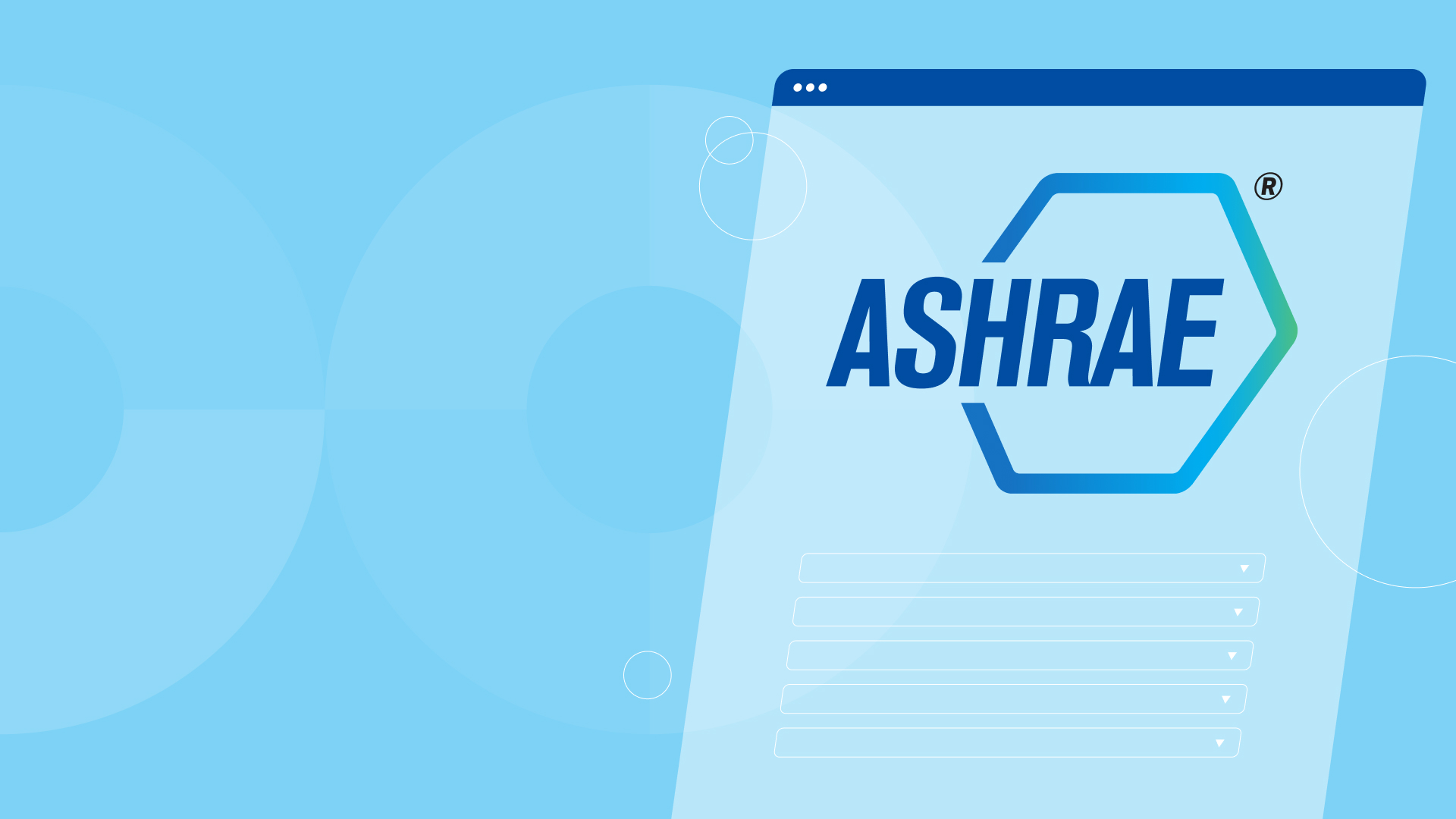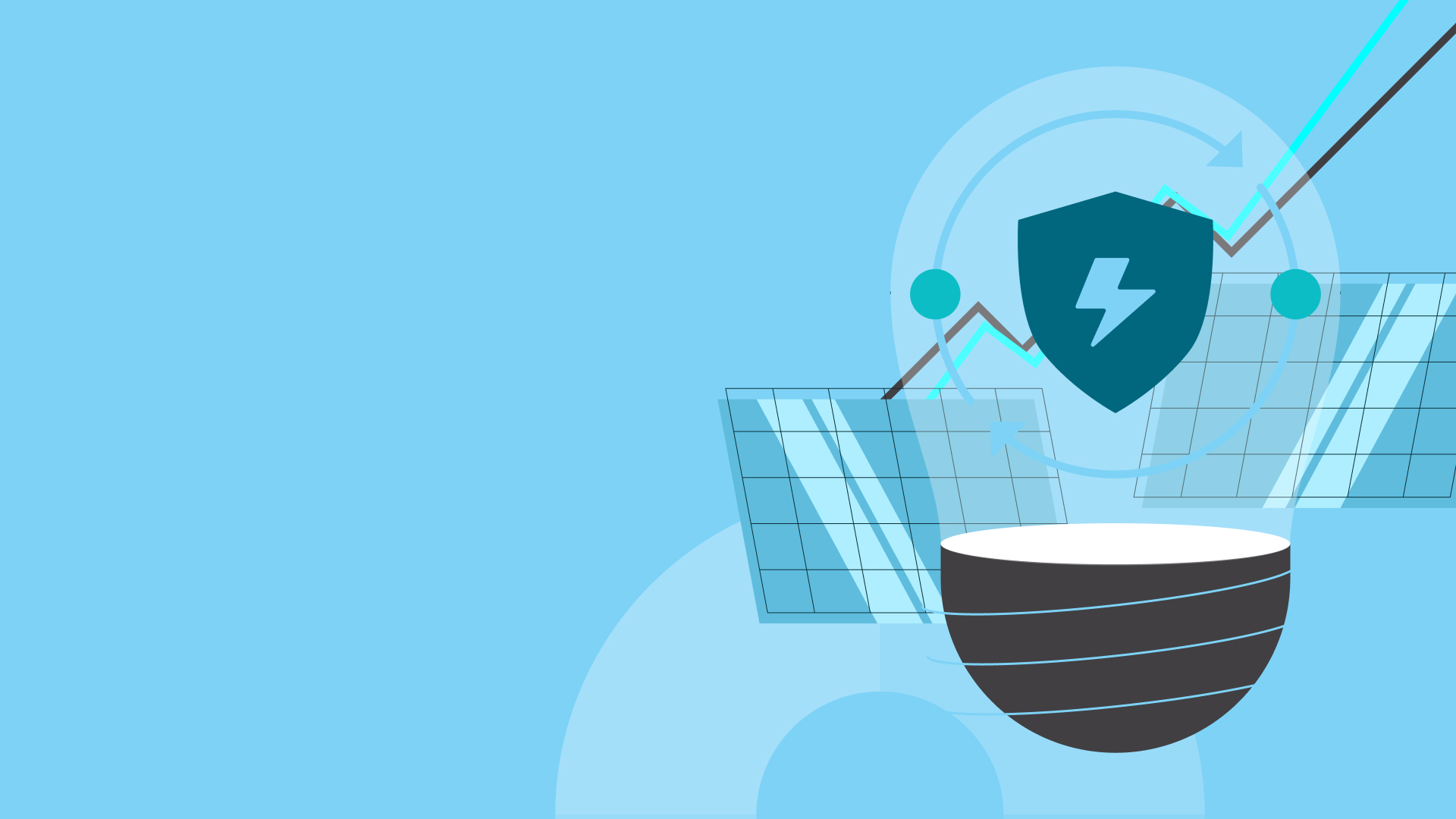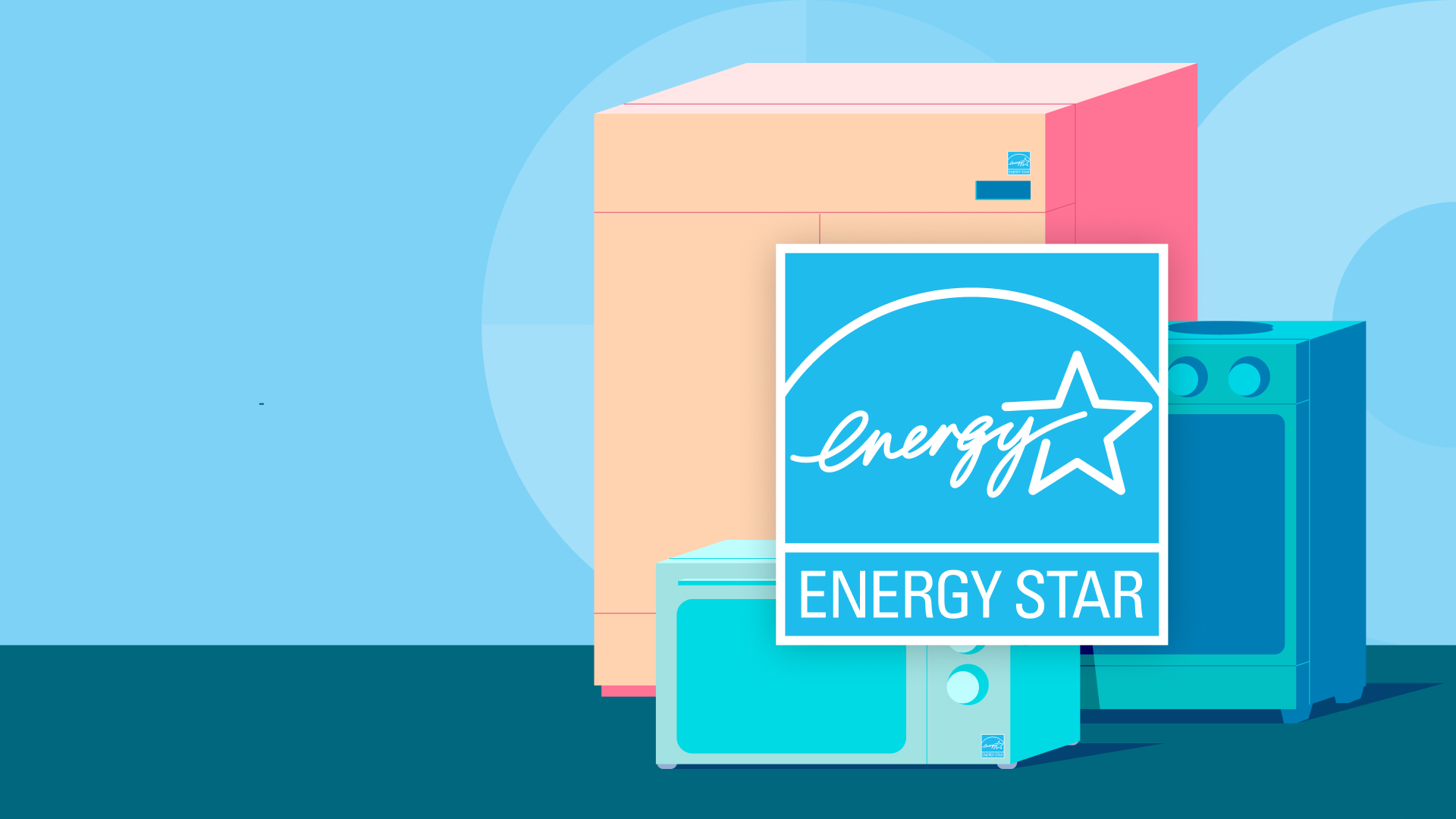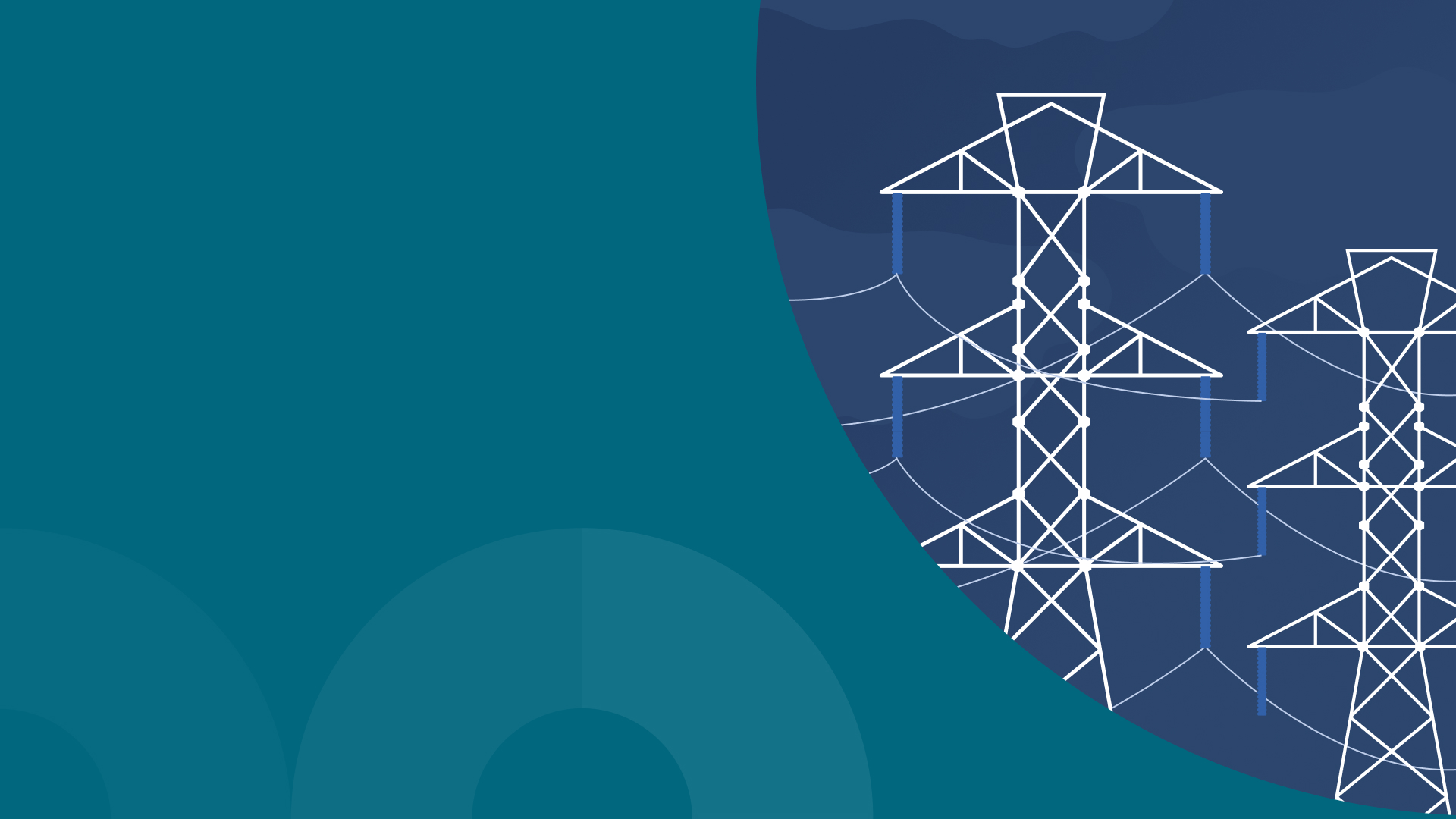30 Must-Know Technical Terms in the Energy Management and Optimization Industry
.png)
Today’s business era is marked by increasing environmental consciousness and a growing emphasis on sustainability. As such, the energy management and optimization industry has become a pivotal player. The effort to reduce energy consumption, lower greenhouse gas emissions, and enhance the efficiency of energy systems has become a global movement.
From renewable energy sources to smart grid technologies and energy-efficient building solutions, this sector is evolving at a rapid pace.
What does this mean? It’s becoming increasingly important for individuals to have the necessary knowledge about the key technical terms that underpin the field.
This comprehensive guide serves to demystify the complex language of energy management and optimization. We will explore 30 essential technical terms that are vital for anyone involved in this dynamic industry.
Understanding these terms is not only important for professionals working directly in energy management and optimization but also for business leaders, policymakers, and consumers who want to make informed decisions regarding their energy consumption and environmental impact.
By familiarizing ourselves with the language of energy management, we can more effectively harness the power of technology and innovation to drive positive change. Each term is a stepping stone toward a cleaner, greener, and more efficient world.
1. Carbon footprint
This refers to the total amount of greenhouse gas emissions produced by an organization or process.
Essentially, everything that we do—from driving cars to producing food to using electricity—releases greenhouse gases into the atmosphere. The most common greenhouse gas is carbon dioxide (CO2). These gases trap heat in the atmosphere and make the planet warmer, hence resulting in global warming and climate change.
“Carbon footprint” is basically a measure of how much of these greenhouse gases we are responsible for releasing into the air. The bigger the carbon footprint, the more we are contributing to climate change.
The goal of energy management and optimization is to help individuals and businesses reduce their carbon footprint and slow down climate change.
2. Cold chain monitoring
The “cold chain” is the supply chain of perishable and temperature-sensitive food, products, and even medicine. Cold chain monitoring involves using technology to make sure that these products or supplies are within the optimal range to keep them safe while they are being stored or transported.
There are special tools and sensors that actively keep an eye on the temperature and conditions of these products so they don’t get too warm or too cold. That way, they are at their best quality. For example, if a vaccine becomes too warm, it can be unsafe to use—or even become ineffective.

Learn more about why a smart cold chain is vital for a warming planet.
3. Deadband
This is a concept that's often used in systems that control things like heating or cooling in buildings. Deadband refers to the temperature range where heating and cooling systems remain inactive to save energy.
Example: At a 70-degree set point and a 2-degree dead band, the temperature will drop to 68 degrees before heating is activated, raising the temperature back to 70.
It's like a range around 70 degrees where the heating or cooling system doesn't do anything. So, if your thermostat has a 2-degree deadband, it means it won't turn on the heat until the temperature drops below 68 degrees, and it won't turn on the air conditioning until the temperature rises above 72 degrees.
Deadband is important because it helps save energy. Instead of the system constantly turning on and off, it waits until the temperature goes outside of that range. This not only keeps you comfortable but also avoids unnecessary energy use.
4. Demand response
This is an attempt to balance the supply and demand of energy or basically a strategy to manage energy consumption during peak demand periods.
Example: Compensation + free hotel when your flight is overbooked. The airline would rather pay for your hotel room than charter a new plane.
Similarly, the grid operator would rather pay you to use less rather than build a new power plant. If you can be flexible on when you use energy, you will get rewarded through cost savings, for example.
5. Distributed Generation (DG)
This refers to electricity that is produced or generated from various small-scale and decentralized sources—often renewable energy sources—and is near the point where it is consumed.
Electricity is often generated at large power plants, which are located far away from where people live and work. Then, it has to be transmitted over long distances. This is called centralized power generation.
Unlike centralized power generation, DG systems are situated within or near the end-users’ facilities. It’s all about producing electricity closer to where it is needed. Instead of relying only on big power plants, DG uses a variety of energy sources, like solar panels, wind turbines, natural gas generators, and small hydroelectric plants, among others.
What’s so great about distributed generation? It makes the energy supply more reliable, reduces energy loss during transmission, and allows people to use cleaner and more sustainable energy sources.
6. Distributed Energy Resources (DER)
This concept is all about decentralized power sources, such as solar panels and small-scale generators, integrated into the grid. Instead of relying solely on one big power plant, you use these various smaller energy sources, which are distributed across a community or region. In addition to small-scale generators, DER includes energy storage systems (like batteries), demand response solutions, energy management systems, and even energy-efficient technologies.
While DG pertains to local generation of electricity, DER is not limited to electricity generation. It involves a more comprehensive approach to managing energy resources. It considers how various technologies and strategies can optimize energy production, consumption, and storage at the local level.
.jpeg?width=1920&height=1080&name=Distributed%20Energy%20Resources%20(DER).jpeg)
Dive deeper into the concept of Distributed Energy Resources (DER).
7. Energy audit
An energy audit is an assessment of how a facility goes about its energy usage (what equipment is consuming the most, bills, etc.). It's like giving your energy consumption a check-up.
During an energy audit, experts examine everything related to energy use, from the type of equipment and appliances you have to how well your building is insulated and how you control the temperature. They also go through your energy bills to understand how much energy you're using and where you're using it the most.
The goal of an energy audit is to find out where you might be wasting energy and how to fix it. For example, they might recommend upgrading to more energy-efficient lighting, improving insulation, or using smart thermostats.
8. Energy benchmarking
Energy benchmarking is essentially comparing a building's or facility’s energy consumption and efficiency against industry standards. If a building uses less energy than the benchmark, it's doing a good job with energy efficiency. If it uses more, it might need some improvements.
Energy benchmarking helps building owners and managers see how they stack up against others and identify areas where they can save energy and money. It's also used by governments and organizations to set goals and standards for energy efficiency, which can lead to a cleaner and more sustainable future.
9. Energy efficiency
It’s all about getting the most out of the energy we use. In the context of buildings and equipment, energy efficiency means using less energy to achieve the same result, like keeping a building warm, cool, comfortable, or well-lit.
One way to boost energy efficiency is by following guidelines and recommendations from organizations like ASHRAE (American Society of Heating, Refrigerating, and Air-Conditioning Engineers). ASHRAE sets standards and guidelines on how to make buildings, heating, cooling, and ventilation systems work in the most energy-efficient way possible.
For instance, ASHRAE might recommend a specific temperature range for heating or cooling a building, taking into account factors like the outside weather and the needs of the people inside. These settings are designed to strike a balance between energy conservation and occupant comfort.
Adhering to ASHRAE settings and guidelines is one way for building owners and managers to make their HVAC systems and buildings operate in a way that minimizes energy consumption while still providing a pleasant and productive indoor environment.

What are ASHRAE settings
and what are they used for?
10. Energy management
Energy management goes beyond merely settling the energy bills. This involves actively overseeing energy resources to render operations both environmentally sustainable and economically advantageous.
This concept revolves around discovering intelligent and sustainable methods to fuel our daily activities while reducing waste and our carbon footprint. In the business arena, energy management has become a systematic strategy for amplifying energy cost savings, minimizing waste, and enhancing overall energy performance. When executed effectively, it empowers businesses to increase savings while using their resources wisely.

The Frequently Asked Questions on energy management are answered here.
11. Energy Management System (EMS)
An EMS is a software and hardware used to help monitor, control, and optimize electricity-consuming devices. It’s a smart system that keeps an eye on how much energy is being used and then helps to use it wisely.
An EMS has the following components:
- metering sensors to measure energy usage
- a control system to transmit commands
- actual controlled devices (airconditioning, lights, or fans)
Using an EMS can reduce energy consumption, lower operating costs, and more efficient operations.
12. Energy resilience
Energy resilience refers to the ability of a system, facility, or organization to withstand and recover from disruptions or outages in its energy supply. It involves strategies and technologies that ensure a consistent and reliable energy supply, even in the face of events like natural disasters or grid failures.
Energy resilience measures include backup power generation, energy storage, and the integration of renewable energy sources to enhance the reliability and continuity of energy services.
13. ENERGY STAR
The ENERGY STAR is a special government-backed symbol for energy efficiency. It can be seen on lightbulbs, refrigerators, and computers among others. Think of it as a seal of approval that the product is an energy-saving champion.
The ENERGY STAR program is administered by the US Environmental Protection Agency which sets energy efficiency specifications. Products that meet these specifications get to display the ENERGY STAR logo. Customers and businesses can then make informed decisions when buying products.
Essentially, here’s what the ENERGY STAR label entails:
- The product is energy-efficient and uses energy wisely.
- It can help save money on energy bills since the appliances use less electricity.
- The product uses less energy, which means fewer greenhouse gasses are emitted—helping you combat climate change.

14. Energy storage
Energy storage is the capturing of energy produced at one time so it can be used at a later time when there is a need for it or if the demand and production of energy are not balanced. It’s similar to using a rechargeable battery to store power for your phone or a flashlight but on a much larger scale.
This starts with collecting extra energy. For example, it’s a sunny day and solar panels on the roof are producing more electricity than needed. Instead of wasting that extra energy, it can be stored in a big battery for cloudy days or at night.
Put simply, energy storage is like having a giant, rechargeable battery for our electricity grid, making our energy supply more dependable, sustainable, and cost-effective. It's an intelligent way to manage power and reduce our impact on the environment.
15. Grid parity
This happens when an alternative energy source—like solar power and wind power—gets to a point where it can generate power at a cost that is either less than or equal to the price of power from the electricity grid. This is considered a turning point in the energy sector mainly because of the following:
- Economic competitiveness and an increase in adoption of clean energy technologies, especially if they are economically competitive with conventional sources like fossil fuels
- Increase in sustainability as renewable energy sources become more cost-competitive, adoption will increase—reducing greenhouse gas emissions and dependency on fossil fuels
- Market growth and increased interest in renewable energy projects will also lead to growth in the job market
- Lower electricity costs for consumers and potential for energy self-sufficiency (ex. Rooftop solar panels)
16. Grid stress
This happens when the demand for energy puts a strain on the supply of energy available, or when the demand is more than what the grid can supply.
Think of it as a traffic jam on the road but for electricity. Since the power grid is essentially like a system of roads for electricity, it can get overloaded. This can happen on hot summer days when homes, buildings, and restaurants all turn on their air conditioners.
If the grid can’t keep up with the demand, it can lead to power outages or blackouts. Grid stress is a reminder that our electricity system has limits, and during times of high demand, it can get overwhelmed. To keep the lights on and prevent blackouts, we need to balance our electricity use and invest in a smarter and more resilient power grid.

How can you alleviate grid stress?
17. HVAC (Heating, Ventilation, and Air Conditioning) Controls
These are the systems and technology used to optimize heating and cooling processes. HVAC controls are like the brains of the HVAC system—smart controllers that ensure that the indoor climate is at the right temperature no matter what the weather conditions are. This involves:
- Temperature control: HVAC controls are like super-advanced thermostats that sense if the place is too hot or too cold. Then, the temperature is adjusted to keep it at the right temperature.
- Airflow control: HVAC controls also help manage the amount of air flowing in and out of your facility.
- Energy efficiency: The HVAC controls can optimize the HVAC system to use the right amount of energy so the place remains comfortable without wasting power.
18. Load factor
Load factor is a key metric used to assess the efficiency of energy utilization in a facility or system. It represents the ratio of the average load (actual energy consumption) to the maximum capacity or peak load over a specific period—typically a month or year.
It's a way to see how efficiently we're using the power grid. A higher load factor indicates more consistent and efficient energy usage, while a lower load factor suggests that a significant portion of the installed capacity remains underutilized.
If a building or factory uses a lot of electricity consistently throughout the day, it has a high load factor, which is good because it means electricity is being used efficiently. But if a place only uses electricity for a short time and then stays idle for long periods, it has a low load factor, which is not efficient.
19. Load profiling
This is all about looking into historical energy usage patterns to understand when a building or facility needs the most power and when it doesn’t. Using this data, load profiling helps businesses make data-driven decisions and strategies on how to use energy wisely and efficiently.
Additionally, understanding how energy is being used helps balance the grid, so it doesn’t experience too much stress during peak times.
20. Load shedding/peak shaving
When the electricity grid is under stress, there is more demand for electricity than it can supply. Here’s where load shedding comes in. It involves cutting off or stopping the supply of electrical power to some areas when power stations are overloaded and can’t produce enough electricity. Put simply, it is an overall reduction in total electricity consumption.
It's like temporarily turning off power in some areas to ensure there's enough electricity for the most important stuff.
Imagine you have too many devices plugged in at once, and your power strip is overwhelmed. You might unplug a few things to make sure your computer and phone stay charged. Load shedding works similarly but on a larger scale.
During peak times when many people are using electricity, certain areas or non-essential appliances may have their power temporarily reduced to ensure critical services like hospitals and emergency services have enough electricity.
21. Load shifting
Load shifting means moving electricity consumption to a different interval of time, but total consumption remains constant (just different times). In short, the load demand is shifted from peak hours to off-peak hours of the day.
For example, restaurants can choose to run dishwashers during the late evening when electricity is cheaper and the demand is lower. Load shifting helps reduce stress on the electricity grid by spreading out when we use electricity, making it more reliable and cost-effective.
22. Microgrid
A smaller-scale version of the traditional power grid. It is a small, self-contained electricity system that can provide power to a specific area independently from the larger electricity grids. While it is attached usually to a centralized national grid, it is able to function independently
Examples of a microgrid:
- College campuses and universities usually have microgrids that include solar panels, natural gas detonators, and advanced control systems. These help during outages.
- Military bases and other high-security areas often use microgrids so they can operate during emergencies.
- Hospitals and laboratories have microgrids for uninterrupted power which is essential for critical medical equipment, specimen, or even procedures.
- Isolated communities or research stations in far-flung areas use microgrids to maintain power and heating, especially in extreme conditions
23. Net Metering
Net metering is a billing arrangement that allows residential and commercial customers with solar panels or other renewable energy systems to connect to the grid and receive credit for any excess electricity they generate.
A two-way meter measures the electricity you use from the grid and the excess electricity you send back to the grid. So when your renewable energy system produces more than you’re using, you receive a credit on your electricity bill.
Here’s an example. Let’s say you have solar panels and sometimes it makes more electricity than you need—especially during hot and sunny days. With net metering, you can send this extra electricity back to your energy supplier.
24. Peak Load
Peak load, also known as peak demand, is the maximum amount of electricity or energy consumed within a specific time frame, typically during a day or a season.
It is the highest point of energy demand on the grid and often necessitates the use of additional power generation resources to meet this temporary surge in consumption. Managing peak loads efficiently is crucial for grid stability and cost-effective energy distribution.
25. Phase Balancing
This is the equalization of electrical loads or the equal distribution of electrical loads in a three-phase electrical system. They have three conductors or wires, each carrying an alternating current with a specific phase relationship. Optimal load phase balancing is from solving the load re-distribution problem.
Commercial and industrial facilities usually use a three-phase system. If unbalanced, this can cause poor performance or premature failure due to mechanical stresses in motors (lower than normal output or higher than normal current). When balanced, advantages include minimal losses, energy restoration, security, and reliability. However, the goal of phase balancing is to ensure that the loads on these three phases are distributed as evenly as possible.
26. Remote temperature monitoring
Thanks to technology, the ability to monitor and track the temperature of a building, facility, or restaurant without being in the actual location is now possible.
This is a big help to business owners. They can have sensors in their facilities, offices, or restaurants that measure the temperature and humidity among others. Even when they’re not in the area, they can check on the temperature via their computers or mobile apps—and even adjust it.
It's like having a watchful eye on the temperature in your school, a restaurant, or a hospital, ensuring that these places are always at the perfect temperature for people's comfort and for things like keeping food fresh or medical equipment safe.
27. Setpoint
This refers to a specific target value or level or range for temperature, pressure, or flow rate, which systems aim to maintain.
For example, if you want your restaurant to be a cozy 72 degrees, or fall into the range that ASHRAE recommends, you would just need to set your thermostat’s setpoint accordingly.
The thermostat then works its magic to make the temperature match your setpoint. If the room is too cold, it heats it up, and if it's too warm, it cools it down. So, in simple terms, the setpoint is the secret code you give to your thermostat to make your room the perfect temperature for you.
28. Smart grid
Short for "smart electrical grid," the smart grid is an advanced and modernized electrical power distribution system. Digital communications and advanced technologies like artificial intelligence are used to monitor and manage the delivery of electricity from sources to the end-users.
Since technology can detect and react to changes in usage patterns, this enhances the distribution of electricity.
For context, the grid was made for simpler times and simpler demands. Electricity was produced and then distributed to the end users. This one-way approach is no longer enough to meet the demands of modern times. The smart grid enables two-way communication between users and utilities for more efficient, more reliable, and more sustainable electricity generation, distribution, and consumption.
29. Smart thermostat
This is a sensor and monitoring device that tracks and records the data on temperature and humidity 24/7. Unlike a regular thermostat, a smart thermostat can connect to the Internet, enabling individuals to control it via computers or smartphones.
30. Time-of-Use (TOU) Pricing
This is a strategy that changes pricing for power based on the time of day and the demand for electricity. It charges consumers different rates for electricity depending on the time of day or the season.
With TOU pricing, electricity costs more during peak demand periods and less during off-peak hours. In essence, TOU pricing encourages consumers to shift their electricity usage to off-peak times instead meaning they may run appliances, charge electric vehicles, or perform energy-intensive tasks during the cheaper off-peak hours to save money.
It is important to note that TOU applies mostly to commercial, industrial, and civil electricity rates. Some states might have higher rates during peak hours, while others keep the difference smaller. The US EIA consistently updates pricing here.
The landscape of energy management and optimization is continuously evolving and it's essential to be armed with knowledge.
We've explored 30 must-know technical terms, each acting as a key to unlocking a deeper understanding of this critical field. From carbon footprints to smart thermostats, these concepts not only shape the way we use energy but also have a profound impact on the environment, our finances, and the reliability of our power supply.
As we navigate a world that increasingly values sustainability, efficiency, and innovation, being well-versed in these technical terms empowers individuals, businesses, and communities to make informed decisions.
After all, the energy management and optimization industry is not just about reducing costs or improving comfort; it's a vital part of building a greener, more sustainable future.
Related FAQs:
What are ASHRAE settings used for?
Additional resources:
U.S. Department of Energy - Energy Management: The U.S. DOE offers comprehensive guidance and resources for energy management practices tailored to businesses.
Office of Energy Efficiency and Renewable Energy: This office under the US DOE regularly publishes new resources and articles on energy efficiency, sustainable transportation, and renewable energy.
Energy Star for Businesses: Energy Star provides tools and resources to help businesses improve energy efficiency, including the Portfolio Manager tool for benchmarking and tracking energy usage.
The Green Business Bureau: The Green Business Bureau offers certification and resources for businesses striving to become more sustainable and energy-efficient.







